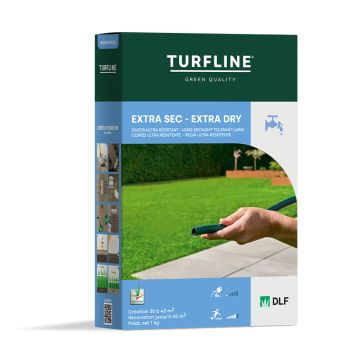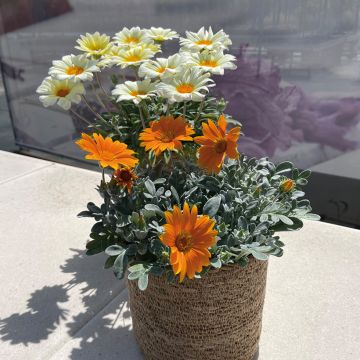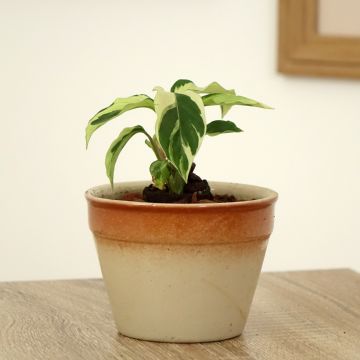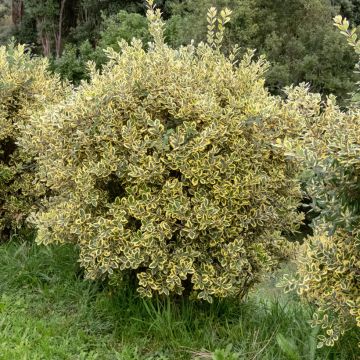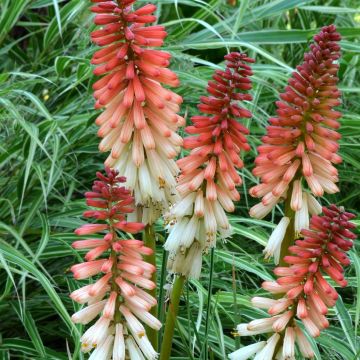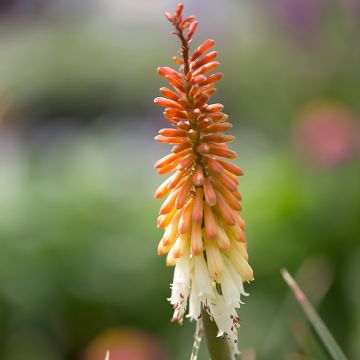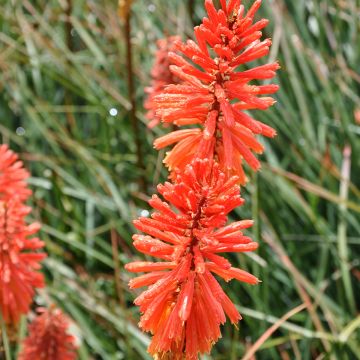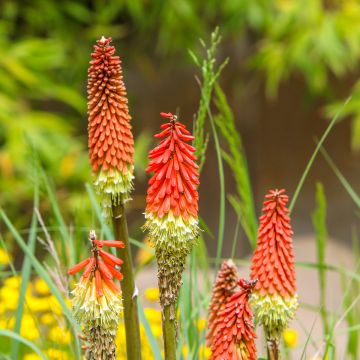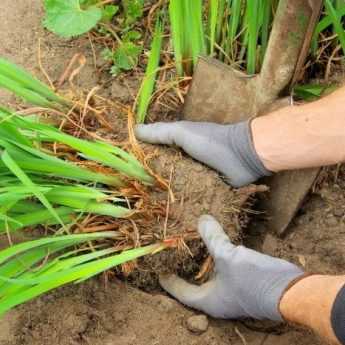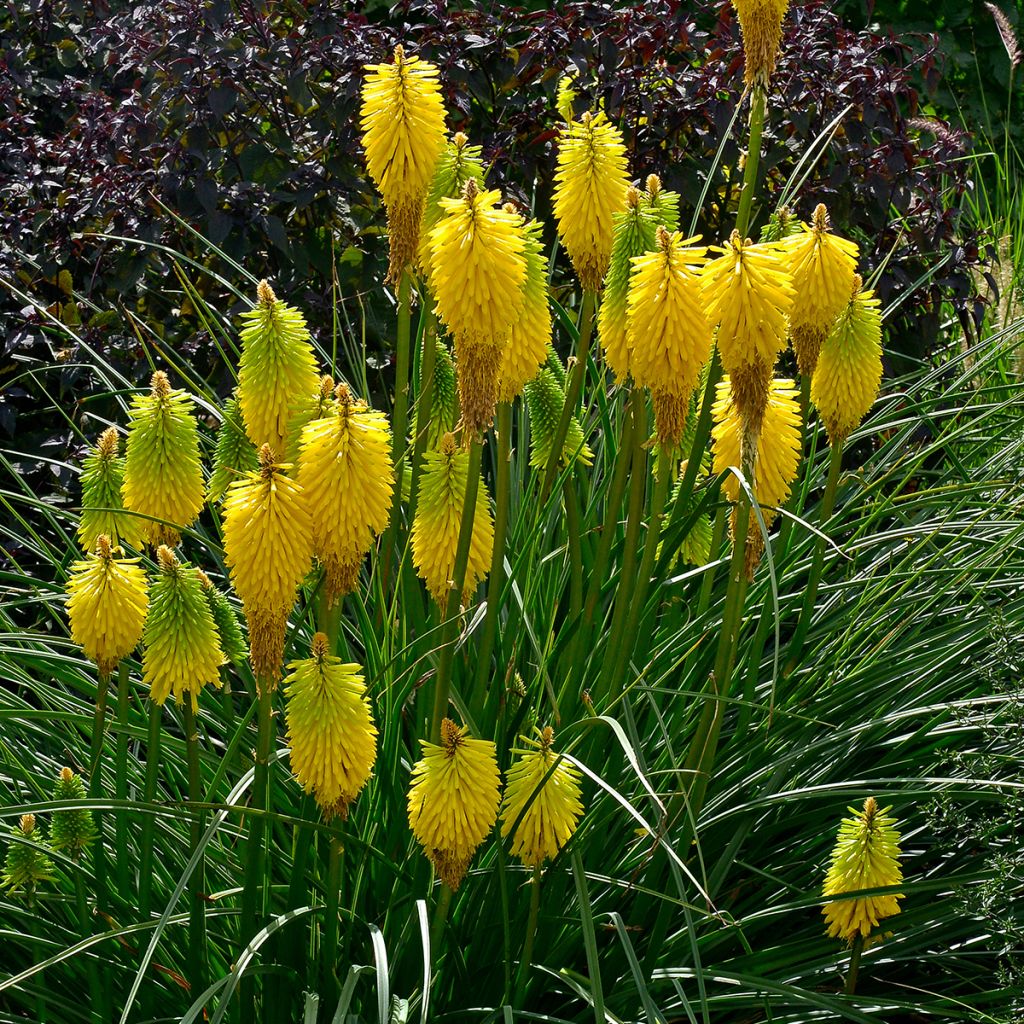

Kniphofia Bees Lemon - Red Hot Poker


Kniphofia Bees Lemon - Red Hot Poker


Kniphofia Bees Lemon - Red Hot Poker


Kniphofia Bees Lemon - Red Hot Poker
Kniphofia Bees Lemon - Red Hot Poker
Kniphofia Bees Lemon
Red Hot Poker, Tritoma, Torch Lily, Poker Plant
Why not try an alternative variety in stock?
View all →This plant carries a 12 months recovery warranty
More information
We guarantee the quality of our plants for a full growing cycle, and will replace at our expense any plant that fails to recover under normal climatic and planting conditions.
From €7.90 for pickup delivery and €6.90 for home delivery
Express home delivery from €8.90.
Does this plant fit my garden?
Set up your Plantfit profile →
Description
Kniphofia 'Bees' Lemon' is a new variety of tritoma that is particularly ornamental. This beautiful plant blooms for weeks in a tangy colour that stands out from afar in flower beds. From a thick tuft of linear and arched leaves emerge robust floral stems topped with almost fluorescent inflorescences, composed of flowers that range from apple-green to lemon-yellow in a superb gradient of colours. This magnificent perennial is highly appreciated by bees. It proves to be undemanding in terms of soil and water-needs. It is also hardy.
Kniphofia 'Bees' Lemon' belongs to the Asphodelaceae family. It is a horticultural hybrid obtained by cross-breeding various species native to South and East Africa. It is a plant with fleshy rhizomes adapted to intermittently flooded soils in summer, but rather dry in winter. This tritoma forms a tuft 50cm (20in) high and 60cm (24in) wide, with a slightly fountain-like habit, formed by tough leaves folded like gutters. When in bloom, it will reach about 90cm (35in) in height. The summer flowering is long, occurring from July-August to October, rising well above the foliage. From the foliage emerge thick, cylindrical, and sturdy stems, which colour from brown at their tips. The stems are devoid of leaves. The honey-bearing and nectar-bearing inflorescence is a dense terminal cluster of tubular and pendulous flowers. The acid-green flower buds evolve into lemon-yellow flowers from the base to the top of the spike. The decorative foliage is evergreen, composed of leaves gathered in a large, spreading bunch.
Their exotic appearance already charmed our grandmothers. Tritomas are surprising plants, yet very sturdy. They light up any garden with their colourful torches. Pair Kniphofia 'Bees' Lemon' with any garden flowers. Just like lady's mantle and some euphorbias, its fresh tones enhance all other shades. It goes particularly well with chocolate, caramel, orange, or red tones. For example, plant it with daylilies or echinaceas, small-flowered asters, or mulleins, and purple grasses like Pennisetum advena 'Rubrum' for colour and texture contrast. Tritomas complement lightly flowering perennials and structure flower beds just like grasses do.
Kniphofia Bees Lemon - Red Hot Poker in pictures


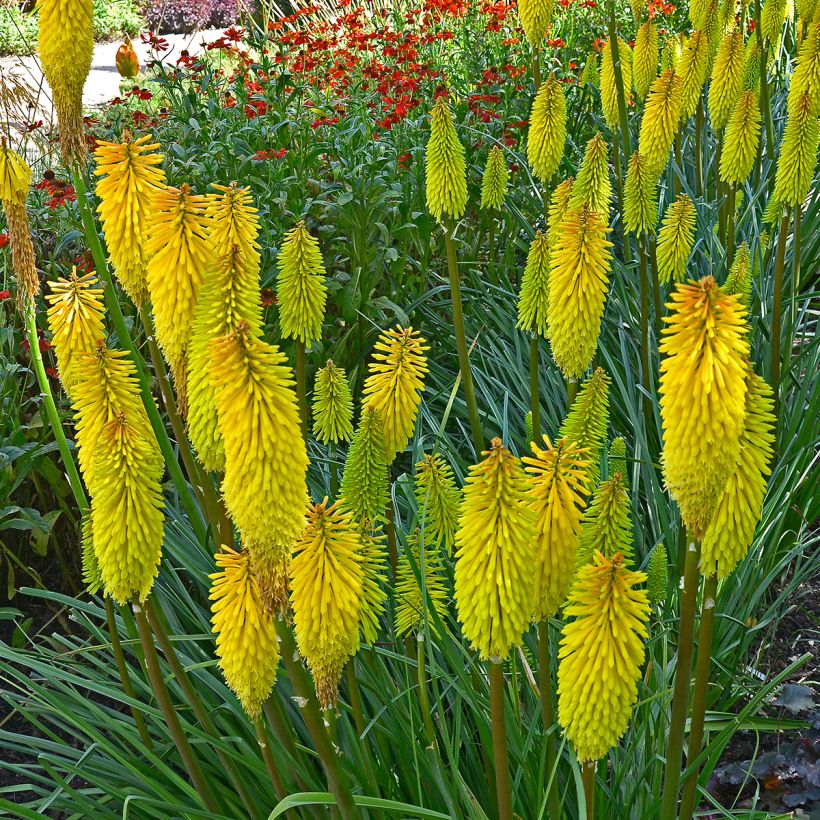

Flowering
Foliage
Plant habit
Botanical data
Kniphofia
Bees Lemon
Asphodelaceae
Red Hot Poker, Tritoma, Torch Lily, Poker Plant
Cultivar or hybrid
Other Kniphofia - Red-Hot Pokers
View all →Planting and care
Plant Kniphofia 'Bees' Lemon' in any well-drained, well-prepared and loosened ordinary soil. Plant in full sun. Make sure the plant does not lack too much water in summer, as this is when it needs it the most. This variety is hardy to -12 to -15°C (10.4 to 5°F). A thick mulch can be installed around the stump to insulate it from frost and protect it during severe winters. This plant tolerates some drought, heat, wind, and specific coastal conditions. Apply organic fertiliser at the start of vegetation. Remove faded stems and flowers in autumn.
Planting period
Intended location
Care
Planting & care advice
Summer flowering perennials
Haven't found what you were looking for?
Hardiness is the lowest winter temperature a plant can endure without suffering serious damage or even dying. However, hardiness is affected by location (a sheltered area, such as a patio), protection (winter cover) and soil type (hardiness is improved by well-drained soil).

Photo Sharing Terms & Conditions
In order to encourage gardeners to interact and share their experiences, Promesse de fleurs offers various media enabling content to be uploaded onto its Site - in particular via the ‘Photo sharing’ module.
The User agrees to refrain from:
- Posting any content that is illegal, prejudicial, insulting, racist, inciteful to hatred, revisionist, contrary to public decency, that infringes on privacy or on the privacy rights of third parties, in particular the publicity rights of persons and goods, intellectual property rights, or the right to privacy.
- Submitting content on behalf of a third party;
- Impersonate the identity of a third party and/or publish any personal information about a third party;
In general, the User undertakes to refrain from any unethical behaviour.
All Content (in particular text, comments, files, images, photos, videos, creative works, etc.), which may be subject to property or intellectual property rights, image or other private rights, shall remain the property of the User, subject to the limited rights granted by the terms of the licence granted by Promesse de fleurs as stated below. Users are at liberty to publish or not to publish such Content on the Site, notably via the ‘Photo Sharing’ facility, and accept that this Content shall be made public and freely accessible, notably on the Internet.
Users further acknowledge, undertake to have ,and guarantee that they hold all necessary rights and permissions to publish such material on the Site, in particular with regard to the legislation in force pertaining to any privacy, property, intellectual property, image, or contractual rights, or rights of any other nature. By publishing such Content on the Site, Users acknowledge accepting full liability as publishers of the Content within the meaning of the law, and grant Promesse de fleurs, free of charge, an inclusive, worldwide licence for the said Content for the entire duration of its publication, including all reproduction, representation, up/downloading, displaying, performing, transmission, and storage rights.
Users also grant permission for their name to be linked to the Content and accept that this link may not always be made available.
By engaging in posting material, Users consent to their Content becoming automatically accessible on the Internet, in particular on other sites and/or blogs and/or web pages of the Promesse de fleurs site, including in particular social pages and the Promesse de fleurs catalogue.
Users may secure the removal of entrusted content free of charge by issuing a simple request via our contact form.



































